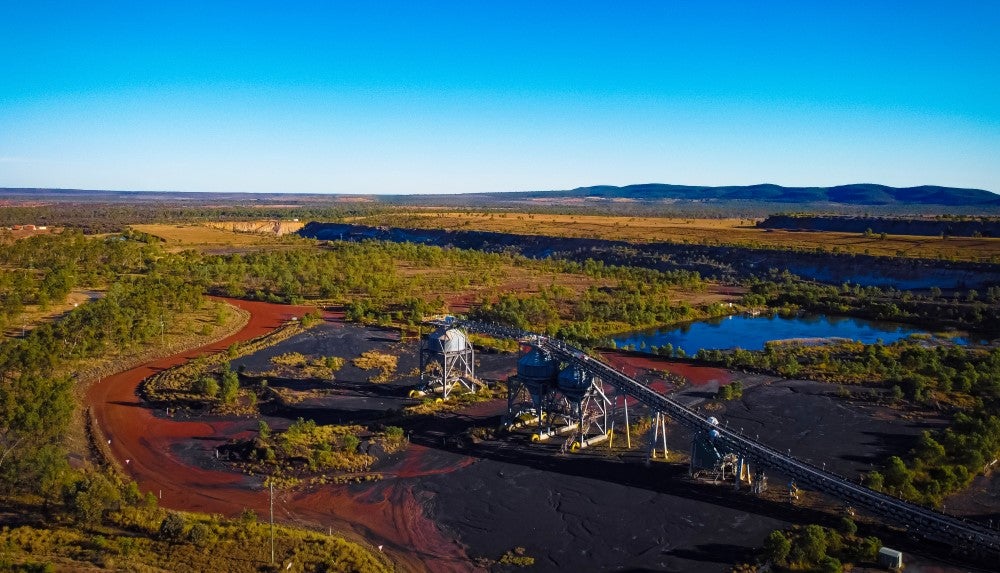
If Escherichia coli (E. coli) ispresent in the drinking water, it poses a significant health problem – at the very least, a bad bout of diarrhoea, or in the worst case, death.
The challenge is that traditional methods of water quality testing demand a laboratory and scientifically trained staff. According to Richard Durand, product manager and expert at Thermo Fisher Scientific Australia’s Water Technologies Division, neither of those requirements are feasible in an outback mining setting.
“When testing for pathogenic contamination in water you need to get the test done properly and you need the results quickly, both of which are very difficult to do when you’re at a remote site,” he explains. “Additionally, you’ve got continual turnover of personnel, as well as fly in – fly out staff who may be rostered off for weeks at a time.”
To perform water quality tests, mining companies have had to contract city laboratories to do the analysis, which means taking samples and sending them to these far away facilities. The problem with this is two-fold – first, there is the delay in getting results, second, samples are often compromised along the journey, rendering the results invalid.
“When we talk about performing a water quality test, it includes the whole scenario from sample collection and preparation to confirmation, with every step in the process being critically important,” says Durand. “What I’ve observed is that the most common point of failure is at the sample collection and preparation stage, and if this occurs, it will deem any lab analysis of the sample worthless.”
Testing delays
In terms of the time it takes for remote mines to receive results from metropolitan labs, Durand says this can be upwards of 2 weeks. Due to the impacts of the pandemic on staff availability and transport schedules, delivery times have been pushed out to unworkable intervals.
“As you can imagine, if you have E. coli contamination in the water at your site, you’ll have an outbreak of illness before confirmation from the lab comes through,” he stresses. “You need access to those results early so you can take appropriate remedial action, otherwise the consequences are dire from a worker health and safety perspective.”
Moreover, water that is treated and used in mine site communities or exploration camps must comply with state regulations and, ideally, with the Australian Drinking Water Guidelines. These regulations often involve a water quality monitoring program for chemical and microbiological analysis.
“This relates to the drinking water as well as water from treatment plants that may be used for non-drinking purposes such as to water the grass in a park at the community mine camp,” says Durand. “If people are using the water, it needs to be monitored to ensure it’s safe. It’s part of a mining company’s duty of care to their workers.”
The only way to guarantee water safety is for mining companies to perform testing on site. The question is how. Durand says Thermo Fisher Scientific have the perfect solution – the TECTA B4 and B16 testing instruments – which he refers to as a “lab in a box”.
“These enable mining companies to perform on-site microbial water quality testing with the same level of accuracy as a fully-accredited microbiological lab and have results in a matter of hours rather than weeks,” he explains. “Importantly, the testing can be done by anyone. It’s completely simplified so that no scientific training or background is necessary.”
Quick results
Developed by Canadian manufacturer TECTA-PDS, these are the world’s first-automated and US Environmental Protection Authority-approved microbiological water quality testing systems. They provide results in 2 to 18 hours as opposed to the 2 weeks generally required using a traditional laboratory method.
“They are quite literally a ‘lab in a box’, performing the entire incubation and measurement of the sample internally,” says Durand. “All a person needs to do is take their water sample, put it into the TECTA cartridge, give it a swirl, put it into the machine, close the lid and press start. If there is contamination the results will be swift – in as little as 2 hours for highly contaminated samples. A confirmed negative takes longer, but still only 18 hours.”
This rapid turnaround provides mining companies with an invaluable benefit: time to respond to a contamination. Significantly, Durand says the TECTA instruments satisfy Australia’s National Association of Testing Authorities (NATA) requirements, with Tamworth Regional Council, Gold Coast Water and Sydney Water all having gained NATA accreditation for using the TECTA method.
“We supply these to a number of major water authorities in Australia who are using them in mobile vans as well as their labs because they are faster and simpler than traditional water quality testing methods,” he elaborates. “These organisations are fully equipped to do testing the traditional way, but are choosing to use TECTA instrumentation instead.”
Durand says the TECTA B4 (for four samples) and B16 (for 16 samples) are an ideal water testing solution for mining companies because they are fast, accurate and cost-effective. All that’s required is for the instrument to be plugged into a mains power source. As it is fully automated, no sample preparation or visual interpretation of the results are required, and results can be emailed so the operator doesn’t have to be at the instrument to receive a report.
“It gives mining companies peace of mind that the water is safe from a microbial perspective by providing fast results, whilst significantly reducing all the costs associated with sending water samples to a laboratory for testing,” Durand summarises. “Further to that, these instruments are designed to remove the human error factor in terms of recording and storing results.”


